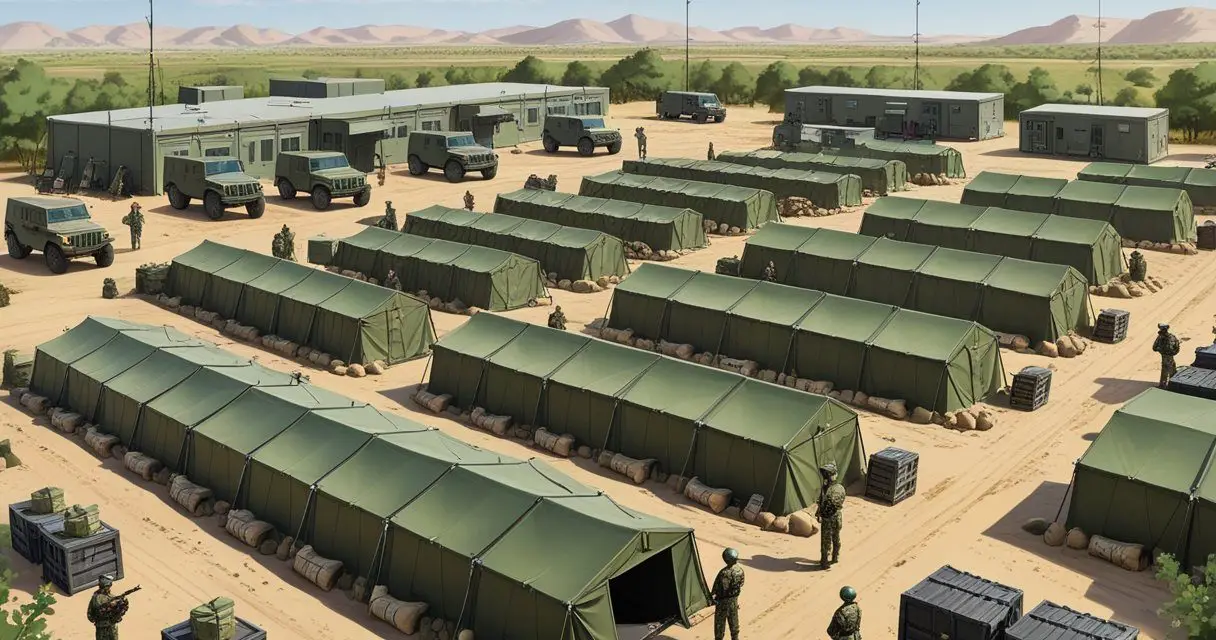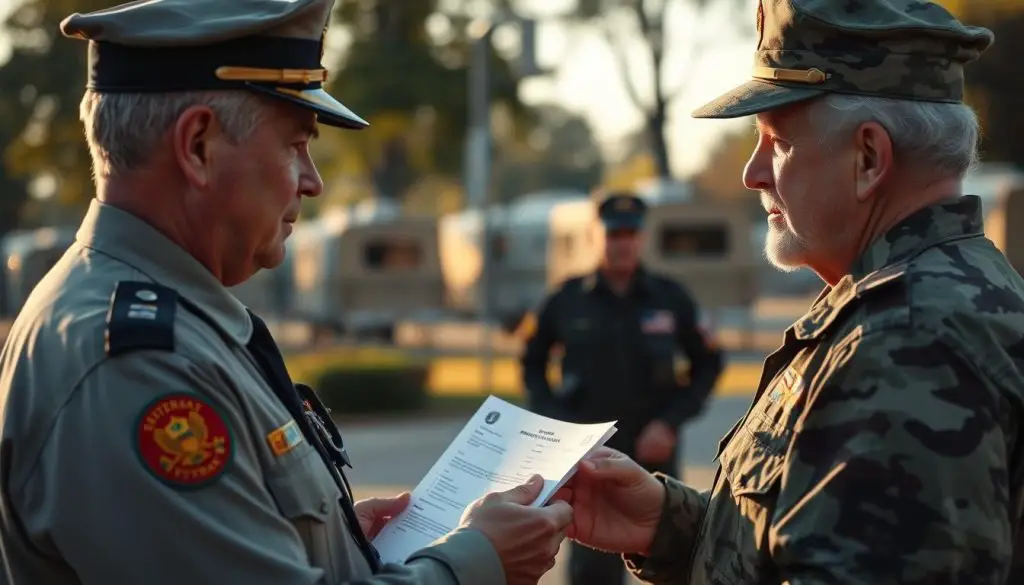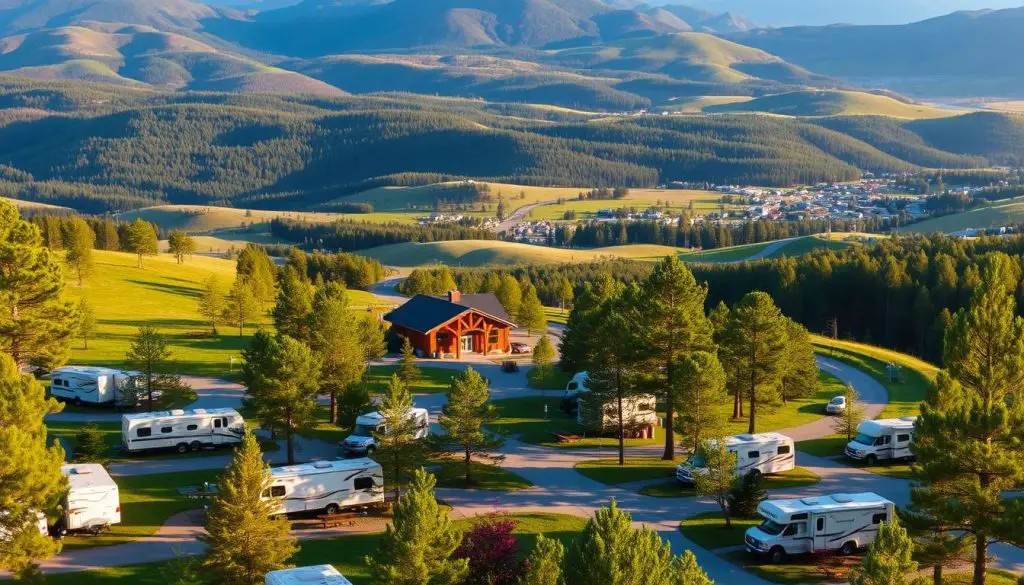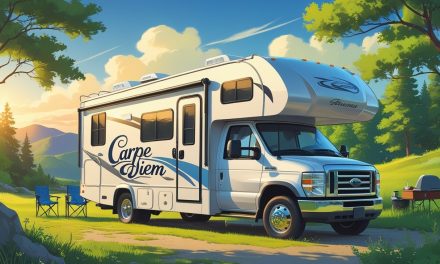Would you like to save this article?
This guide answers that exact question and explains how access works on U.S. installations today. A 2018 law, applied from 2020, widened entry to some exchange and MWR benefits for qualifying users, but local commanders still set limits.
Who qualifies is often clear: Purple Heart recipients, certain disabled people, former POWs, retirees, and active service members follow priority rules. Base policies vary, so what is allowed at one campground may differ at another.
Expect typical fees between about $17 and $50 per night, with peak spots near major destinations costing more. Length-of-stay and reservation priority differ by base and often favor active duty first, then retirees and other eligible guests.
Read on for practical steps to confirm eligibility, prepare gate documents, and plan stays across installations so your family travel goes smoothly.
Key Takeaways
- Federal changes in 2020 expanded access, but local rules still control what is available.
- Priority usually favors active duty, then retired members, then other qualifying guests.
- Fees typically range from about $17 to $50 per night; peak rates can be much higher.
- Stay limits vary by installation, from two weeks to several months in some places.
- Always call the specific base campground for the latest information and gate requirements.
Quick answer: can veterans use military rv parks today?
Short answer: Today, a subset of qualifying former service members has access to many on‑base campgrounds, but rules and priorities differ by installation.
What changed in 2020 and who it helped
Effective Jan 1, 2020, the Purple Heart and Disabled Veterans Equal Access Act opened select MWR benefits to qualifying people. That includes Purple Heart recipients, former POWs, and those with a 0–90% service‑connected disability rating. The law enlarged benefits tied to exchanges and commissaries, which often extend to campgrounds and related recreation.
Key differences between retiree access and other eligible users
- Active duty and their family typically get first booking windows.
- Retirees follow, with stronger reservation priority.
- Qualified veterans normally receive later priority and may face limits when facilities are busy.
Practical tip: Commanders keep discretion to limit access at capacity. Always call the specific base to confirm gate requirements, current access rules, and availability before planning a stay.
Who is eligible and what proof you need to access military campgrounds
Access rules for base campgrounds depend on status, local policy, and the documentation you present. Eligibility includes several groups, and each has different booking priority and proof requirements.
Active duty, Guard/Reservists, retirees, and family members
Active service members, National Guard and Reserve members, retirees, and their dependents usually have clear priority. Sponsors often book for family and approved guests.
Bring a current DoD ID, dependent ID, vehicle registration, and proof of insurance for gate entry.
Qualifying veterans under expanded MWR access
The 2020 expansion specifically covers Purple Heart recipients, former POWs, and those with a VA service‑connected disability rating from 0% to 90%.
Disabled veterans should carry VA credentials that show their disability status. A second photo ID may be requested at the gate.
Local rules, commander discretion, and required documents
Commanders set local limits when capacity is tight and may restrict recreation areas or amenities. Policies differ by installation — Army, Navy, Air Force, Marine Corps, and Coast Guard sites vary.
- Tip: Call the specific base to confirm who may enter, what IDs are accepted, and current campground availability.
How to get on base and book a stay: step-by-step
Begin the process by checking VA credentials and DoD rules so you know what access to expect. This saves time and avoids surprises at the gate.
Verify eligibility: Check your VA disability rating or awards (Purple Heart, former POW status) and follow DoD guidance tied to the 2020 expansion.
Call the campground: Ring the specific campgrounds office for current rules, sponsor requirements, and real‑time availability. Local commanders may set limits.
- Reservations: Active duty members often book up to 12 months ahead; retirees often get a 6‑month window; qualifying veterans follow those categories.
- Prepare IDs, vehicle registration, and proof of insurance for base entry. Have a second photo ID available.
Check‑in and travel tips: Arrive during office hours with your confirmation. Ask about quiet hours, site rules, and any area restrictions.
Plan for summer demand — many campgrounds fill weeks or months in advance. If you need longer time in a region, ask about rotating between nearby sites.
What it costs, how long you can stay, and which amenities you can use
Short overview: Nightly fees at many campgrounds are lower than nearby private sites, but peak destinations push prices up. Typical rates often sit between about $17 and $50 per night, with some tourist areas nearing $100.
Rates and ways to save
Budget tip: Book early and ask about seasonal discounts. Average sites run near $22; calling ahead helps lock better rates and seasonal packages.
Length-of-stay policies
Stay limits vary by installation. Some allow two weeks; others permit stays up to six months. Ask whether extensions or transfers within the same installation are possible.
Amenities generally open
- Campground hookups and tent sites
- Rentals like kayaks, bikes, and cabins on a space‑available basis
- Commissary, exchange, golf, bowling, and other recreation areas
Amenities that may be limited
Some services are often excluded for expanded access: fitness centers, childcare, certain lodging, and others. Commanders may restrict items when capacity is tight.
“Confirm access and current offerings with the installation MWR office before arrival.”
| Item | Typical Cost | Stay Limit | Common Access |
|---|---|---|---|
| Standard campsite | $17–$50 | 2–60 weeks | Generally open |
| Tourist area site | $50–$100 | Varies | Call ahead |
| Cabins / cottages | Space‑available rates | Short stays typical | Sometimes restricted |
| Commissary / exchange | Free entry benefits | N/A | Often available |
Conclusion
A little preparation goes a long way when arranging stays at on‑post campgrounds and nearby recreation areas.
Verify eligibility under the 2020 expansion, call the specific campground, and keep photo IDs and vehicle papers ready. Commanders set local limits, so flexibility with dates helps during peak camping time.
Enjoy lower rates, hookups, and occasional cabins when space is available. Active duty and retirees usually book first, so plan alternate areas or dates if you are a qualifying veteran with a service‑connected disability.
With a quick call and proper paperwork, stays at military campgrounds can feel like a comfortable home away from home and add a lot to family life on the road.







